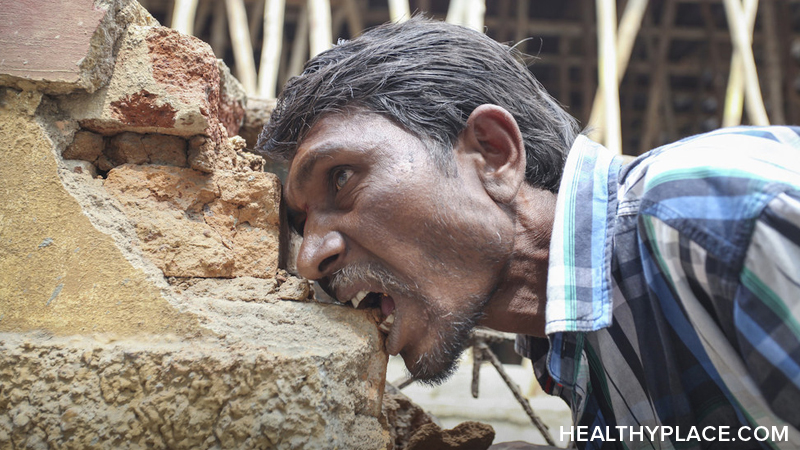
A typical example is a young girl from a poor family who suffered from constipation and colonic obstruction as a result of eating stones. A Turkish research team has reported most cases of colonic obstruction to be related to pica. In pica, the compulsive behavior has been linked to low economic status.

The subject ate uncooked rice during three pregnancies resulting in abdominal discomfort (Upadhyaya & Sharma, 2012). An example of pica linked to OCD is a pregnant woman with obsessive-compulsive disorder whose sole manifestation was pica. If occurring with another mental disorder, or during a medical condition, it is severe enough to warrant independent clinical attention.Īlthough a link is often made between pica and obsessive-compulsive disorder, at this time pica is not classified as a symptom or specifier of OCD, although it was suggested as part of the DSM-5 reclassifications.The eating behavior is not part of a culturally supported or socially normative practice.The eating of nonnutritive, nonfood substances is inappropriate to the developmental level of the individual.Persistent eating of non-nutritive, nonfood substances for a period of at least one month.The criteria for pica under DSM-5 is as follows (APA, 2013): Individuals feigning a factitious disorder may ingest nonfood items in order to imitate the symptoms of a more serious disorder. Pica is often co-morbid with other mental disorders and may be seen in autism spectrum disorder, schizophrenia, anorexia nervosa and nonsuicidal self-injury. They are at higher risk of more serious health issues such as abdominal pain, and intestinal and colonic obstruction. Symptoms may include mineral deficiency, unhealthy nails and hair, and weight loss. Individuals who engage in pica may experience some of the same symptoms as a malnourished anorexic. Like those with OCD, individuals with pica are conscious of their behavior even though it is unhealthy and illogical behavior. Pica is sometimes linked to obsessive-compulsive disorder and impulse disorder because of the persistent dieting on non-nutritious food. Items eaten include earth, paper, chalk, feces, glass, paper and other nonfood items. Under DSM-5, there is no age specification for the onset of pica. With the new classification, DSM-5 sought to address the over classification of eating disorders into a not otherwise specified category. Pica, formerly under a section for disorders with onset in childhood and adolescence, now falls under the eating disorders umbrella of “Feeding and Eating Disorders” in DSM-5. Adults engaging in pica often have intellectual disabilities. Pica in children over five years of age can be a sign of age-inappropriate behavior. The act is considered developmentally inappropriate as non-discrimination between what one ingests orally is associated with young children.

Pica involves an individual persistently and compulsively eating nonfood substances that are nonnutritious. DSM-5 Category: Feeding and Eating Disorders Introduction


 0 kommentar(er)
0 kommentar(er)
